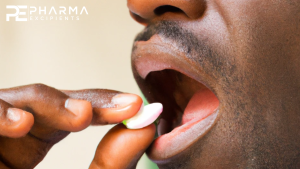Soluplus as a solubilizing excipient for poorly water-soluble drugs: Recent advances in formulation strategies and pharmaceutical product features

Since the emergence of Soluplus® (SOL) as a commercial graft copolymer, multiple publications have been issued on its promising potential as a solubilizing excipient that could promote the dissolution rate and bioavailability of several poorly water-soluble drugs. Numerous drug formulation strategies were embraced for SOL to yield highly bioavailable products, such as solid dispersions (SDs), nanosuspensions, nanomicelles, and nanoemulsions. Likewise, the resulting formulations are supposed to improve drugs’ physical stability and solubility in biological fluids. SD is regarded as a straightforward approach that was implemented with SOL in drug development. Several SD strategies, such as hot-melt extrusion, nanoextrusion, supercritical fluid processing, electrospinning, spray-drying, and freeze-drying are superior to other techniques in producing more effective SOL-based formulations. This review recapitulates the most recent literature showing the diversity of the current application of SOL in the different pharmaceutical formulations, highlighting the prospective, current drug delivery systems, and applied preparation strategies.
Introduction
A great proportion of the orally administered drug dose remains unabsorbed, which limits its clinical applicability [1]. The reason beyond this is that drugs with poor solubility in water have poor pharmacokinetic properties and limited availability to the target site [2]. Therefore, active principals classified by the Biopharmaceutics Classification System (BCS) as class-II and class-IV drugs suffer from inadequate bioavailability because they lack appropriate water solubility. Moreover, BCS class-II pharmaceuticals have high permeability; thus, their absorption is a dissolution-controlled process [3,4] (see Table 4).
Numerous strategies have been harnessed to circumvent the difficulties linked to poorly water-soluble pharmaceuticals [5]. Myriad drug delivery systems (DDS) have emerged to boost the absorption of certain drugs via amending their release profile and therefore enhancing the biodistribution of these drugs throughout the body and minimizing the adverse effects arising following administration [6,7]. Recently, polymer-based DDSs have been designed to rapidly release drugs to improve their limited bioavailability. For this purpose, researchers have employed generally recognized as safe (GRAS) polymers, including poloxamers (POLX), polyvinylpyrrolidone (PVP) K-30, polyethylene glycol (PEG) 4000 and 6000, low molecular weight chitosan, etc. [8,9].
Soluplus® (SOL), a unique water-soluble graft copolymer introduced by BASF Corporation, is constructed from hydrophilic and lipophilic portions. The hydrophilic moiety is composed of PEG residue corresponding to 13% of the polymer, whereas the polyvinyl caprolactam and polyvinyl acetate act as the lipophilic backbone in the polymer structure (Fig. 1.1). This amphiphilic polymer can be used above the critical micelle concentration (CMC) to dissolve certain drugs via micelle formation. However, below CMC, SOL is used for drug precipitation inhibition via restraining the drug nucleation and crystal growth and providing steric stabilization in a supersaturated state [10]. These traits can assist SOL in ameliorating the dissolution behavior and bioavailability of drugs loaded in self-nanoemulsifying drug delivery systems (SNEDDSs). These strategies are widely pursued because of their favorable drug-loading characteristics, nature, and low excipients concentration.
Various outstanding reviews have been issued about the technologies in the dissolution enhancement of drugs using certain DDSs, such as micelles, solid dispersions (SD), nanosuspensions, and nanoemulsions. Moreover, various drug carriers, such as cyclodextrin, PEG, and PVP, were intensively investigated in the literature. To the best of our knowledge, two literature reviews have discussed the application of SOL in preparing polymeric nanomicelles and SDs to produce more effective therapeutics [11,12]. Moreover, to date, no comprehensive reviews have discussed the preparation strategies of systems incorporating SOL and the physicochemical properties of SOL-based fast-dissolving preparations. Nevertheless, several SOL-based formulations are promising for boosting drug solubility and have been developed based on the SD technique [13]. Therefore, this article is not a reiteration of previous work but critically considers recent updates on the variety of applications of SOL in drug delivery, emphasizing its benefits, contemporary preparation, drug incorporation techniques, and physicochemical features of SOL-based preparations.
Read more here
Mohamed S. Attia, Ahmed Elshahat, Ahmed Hamdy, Ayman M. Fathi, Mahmoud Emad-Eldin, Fakhr-Eldin S. Ghazy, Hitesh Chopra, Tarek M. Ibrahim, Soluplus® as a solubilizing excipient for poorly water-soluble drugs: Recent advances in formulation strategies and pharmaceutical product features, Journal of Drug Delivery Science and Technology, 2023, 104519, ISSN 1773-2247, https://doi.org/10.1016/j.jddst.2023.104519.
Read more on Orally Disintegrating Tablets (ODTs) here:


